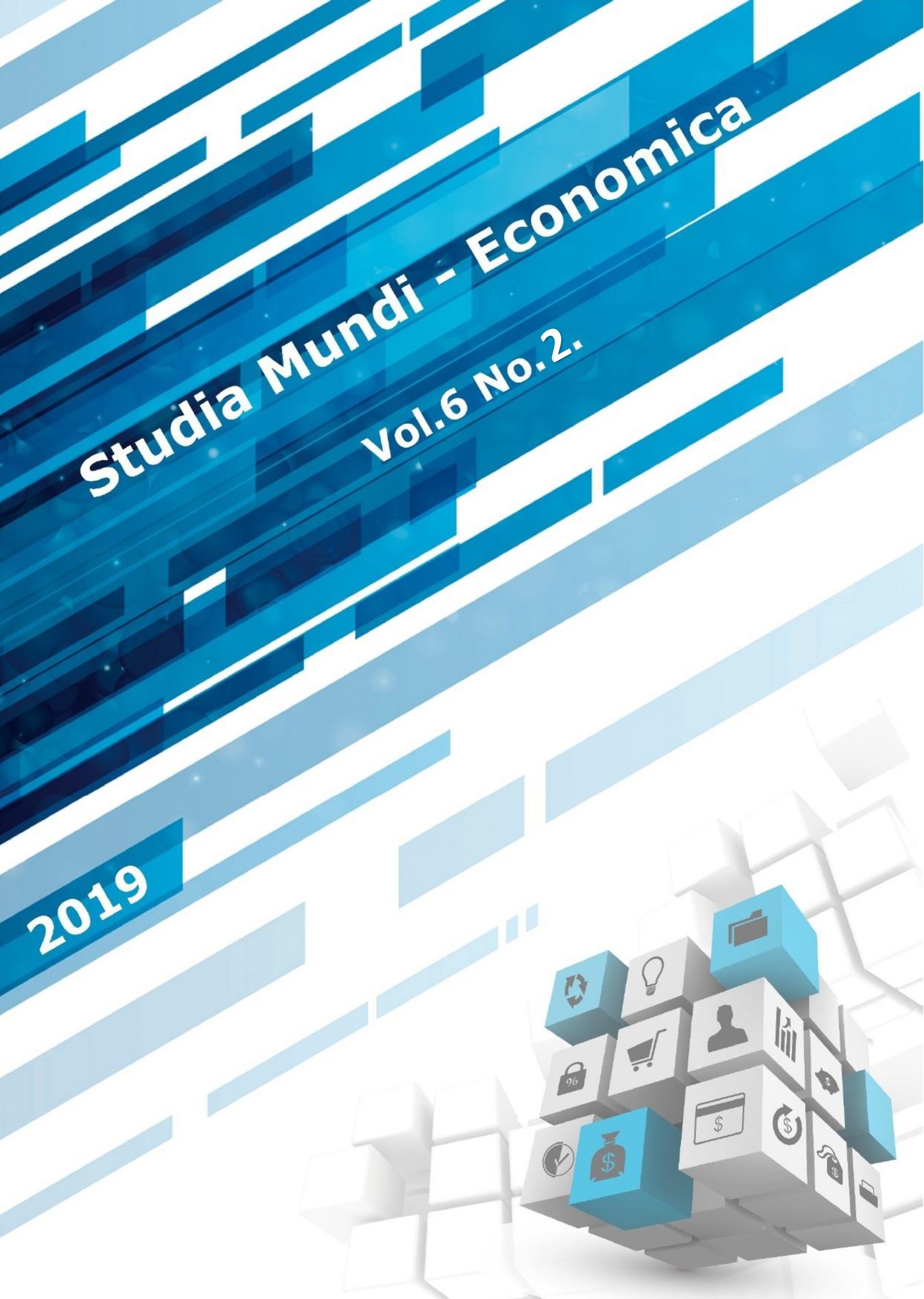The empirical analysis of technology and foreign direct investments
DOI:
https://doi.org/10.18531/Studia.Mundi.2019.06.02.120-129Kulcsszavak:
Foreign Direct Investment, Technology, Growth, TradeAbsztrakt
The main aim of this study is to analyze the relationship between foreign direct investment and R&D spending using panel co-integration methods for upper middle-income economies and high-income economies. A larger level of investment is needed to increase the capital stock in order to ensure growth, but the typically low savings rate makes this difficult to achieve. Theoretically, it is expected that foreign direct investments would solve the saving inadequacy problem of the target country leading to economic growth by increasing capital accumulation. In this study, Levin Liu Chu and Pesaran Shin Unit Root tests, Pedroni panel co-integration tests was applied. According to the co-integration analysis, foreign direct investment and R&D spending move together in the long run. The results of the panel co-integration test which examines the long-term relationship, showed that R&D spending has stronger effect on foreign direct investment. In a globalized world, technology is one of the most important determinant of competition among countries. Technology improves profitability and competitiveness by increasing productivity. It can be seen that technological developments are coupled with economic growth throughout the history. With the involvement of technology transfers in production, added value will increase in manufacturing industry, so this will accelerate the process growth. Infrastructural investments, education system reforms tax reduction should be provided by government to promote technology level. The findings of this paper underline that capital accumulation and foreign direct investment are very important for countries in terms of development.
Hivatkozások
Abbes, S. M., Mostéfa, B., Seghir, G., Zakarya, G. Y. (2015). Causal Interactions between FDI, and Economic Growth: Evidence from Dynamic Panel Co-integration. Procedia Economics and Finance, 23, 276–290
Afşar, M. (2008). The Causality Relationship Between Economic Growth and Foreign Direct Investment In Turkey. Selçuk Üniversitesi Sosyal Bilimler Enstitüsü Dergisi, 0(20), 1–9
Almfraji, M. A., Almsafir, M. K. (2014). Foreign Direct Investment and Economic Growth Literature Review from 1994 to 2012. Procedia - Social and Behavioral Sciences, 129, 206–213
Baltagi, B. H. (2005). Econometric Analysis of Panel Data (3rd ed)
Cho, H., Ramirez, M. (2016). Foreign Direct Investment and Income Inequality in Southeast Asia: a Panel Unit Root and Panel Cointegration Analysis, 1990-2013. Atlantic Economic Journal, 44(4), 411–424
de Mello, L. R. (1997). Foreign direct investment in developing countries and growth: A selective survey. The Journal of Development Studies, 34(1), 1–34
Eapen, A., Yeo, J., Sasidharan, S. (2019). Finance constraints and technology spillovers from foreign to domestic firms. Economic Modelling, 76, 50–62
Ekmekçi, U., Ansal, H. (2009). Teknolojik yetkinliklerin doğrudan yabancı yatırımlardan bilgi transferine etkileri. The Impact of Technological Capabilities on Knowledge Transfer from Foreign Direct Investments., 8(4), 37–48.
Ghebrihiwet, N. (2017). Acquisition or direct entry, technology transfer, and FDI policy liberalization. International Review of Economics & Finance, 51, 455–469
Güvenek, B., Alptekin, V. (2010). Enerji Tüketimi ve Büyüme İlişkisi: OECD Ülkelerine İlişkin Bir Panel Veri Analizi. 1(2), 172–193
Ha, Y. J., Giroud, A. (2015). Competence-creating subsidiaries and FDI technology spillovers. International Business Review, 24(4), 605–614
Im, K. S., Pesaran, M. H., Shin, Y. (2003). Testing for unit roots in heterogeneous panels. Journal of Econometrics, 115(1), 53–74
Indicators | Data. (n.d.). Retrieved March 3, 2018, from https://data.worldbank.org/indicator
Kargi, B. (2014, March). Portfolio in Turkish Economy, and A Long Termed Relation Between Foreign Direct Investments and The Growth, and The Structural Breakage Analysis (1980-2012)
Levin, A., Lin, C.-F., James Chu, C.-S. (2002). Unit root tests in panel data: asymptotic and finite-sample properties. Journal of Econometrics, 108(1), 1–24
Pedroni, P. (1999). Critical Values for Cointegration Tests in Heterogeneous Panels with Multiple Regressors. Oxford Bulletin of Economics and Statistics, 61(S1), 653– 670
Pedroni, P. (2004). Panel Cointegration: Asymptotic and Finite Sample Properties of Pooled Time Series Tests With An Application To The Ppp Hypothesis. Econometric Theory, 20(3), 597–625.
Samuelson, P. A., Nordhaus, W. D. (2001). Macroeconomics (17th ed). Boston: Boston, Mass McGraw-Hill/Irwin
Sandhu, N., Gupta, N. (2016). Determinants of Inward Foreign Direct Investment (1994-2014): The Case of India. SCMS Journal of Indian Management, 13(4), 83–94
Song, S., Makhija, M., Lee, S.-H. (2014). Within-Country Growth Options Versus Across-Country Switching Options in Foreign Direct Investment. Global Strategy Journal, 4(2), 127–142
Sunde, T. (2017). Foreign direct investment, exports and economic growth: ADRL and causality analysis for South Africa. Research in International Business and Finance, 41, 434–444
Wilson, R. T., Baack, D. W. (2012). Attracting Foreign Direct Investment: Applying Dunning’s Location Advantages Framework to FDI Advertising. Journal of International Marketing, 20(2), 96–115
World Bank Country and Lending Groups – World Bank Data Help Desk. (n.d.). Retrieved March 4, 2018, from
https://datahelpdesk.worldbank.org/knowledgebase/articles/906519-world-bank country-and-lending-groups
Letöltések
Megjelent
Folyóirat szám
Rovat
License
Copyright (c) 2019 Selim Corekcioglu

This work is licensed under a Creative Commons Attribution-NonCommercial-NoDerivatives 4.0 International License.
A folyóirat Open Access (Gold). Cikkeire a Creative Commons 4.0 standard licenc alábbi típusa vonatkozik: CC-BY-NC-ND-4.0. Ennek értelmében a mű szabadon másolható, terjeszthető, bemutatható és előadható, azonban nem használható fel kereskedelmi célokra (NC), továbbá nem módosítható és nem készíthető belőle átdolgozás, származékos mű (ND). A licenc alapján a szerző vagy a jogosult által meghatározott módon fel kell tüntetni a szerző nevét és a szerzői mű címét (BY).






